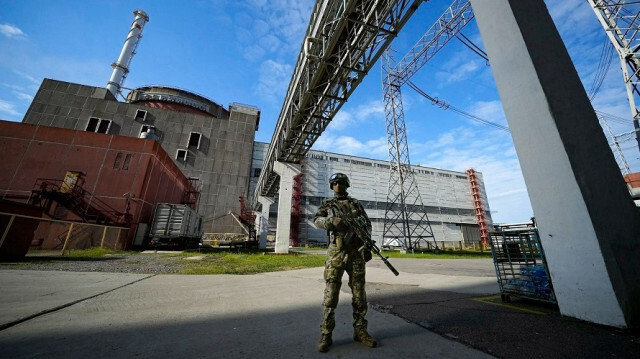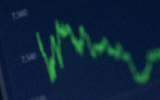
Disconnection from unified power system with Russia and Belarus spurred Ukraine’s integration with European grid, says Andrian Prokip, senior associate at Wilson Center’s Kennan Institute
Ukraine has seen major shifts in its energy sector and outlook since the start of the war with Russia, which is now entering its third year.
On Feb. 24, 2022, Russia launched what it said was a “special military operation”, sparking a conflict that has claimed the lives of nearly 10,600 civilians and injured almost 20,000, according to the latest UN figures published this week.
The war has inflicted significant damage to both Ukrainian and Russian infrastructure.
In the case of Ukraine, energy infrastructure has been one of the primary targets of Russian airstrikes, particularly in the winter months, when temperatures in the region drop below freezing.
That has prompted a shift in strategies in Ukraine's energy sector, primarily two major changes, first in terms of policy and second in how to manage the impact of Russian attacks, according to Andrian Prokip, a senior associate at the Wilson Center's Kennan Institute.
Half of the fuel consumed in Ukraine before the start of the war came from Russia and Belarus, all of which was then cut off, while Moscow began targeting Ukrainian fuel depots with the specific intent of creating a fuel crisis, Prokip told Anadolu.
There were shortages and a brewing crisis, but Ukrainian companies managed to establish new fuel supplies from European countries, he said.
Ukraine's disconnection from the unified power system with Russia and Belarus pushed the country's integration with the European grid, which helped in “surviving” the winter of 2022, said Prokip, who is also the director of the energy program at the Ukrainian Institute for the Future.
He said another significant dent in the country's energy capacity was caused by Russia's annexation of Ukrainian regions, its control over the Zaporizhzhia Nuclear Power Plant, as well as the destruction of the Kakhovka Dam in June 2023.
Despite the challenges, he said, Ukraine's energy capacity as a whole was just enough to cover demand when entering the winter of 2023, and last week they marked the first year without any planned cutoffs.
On the future of Russian natural gas transits through Ukraine, Prokip said Kyiv will not sign any new direct agreement with Russian gas giant Gazprom after their current five-year deal ends this year.
“If some European companies want to have Russian gas imported, then they have to sign two agreements, one with Gazprom to supply the gas and another agreement with the Ukrainian gas transmission system operator to deliver this gas to European countries,” he explained.
Volodymyr Omelchenko, the director of the energy program at Ukrainian think tank Razumkov Center, told Anadolu that the Kyiv government could consider that option.
“However, it is difficult to say what the solution will be now since this problem relates to the issue of national security,” he said.
“If there is no transit contract, the Ukrainian operator will focus on domestic gas transport and the provision of transport services for export-import deliveries of gas with EU countries, including using underground gas storage facilities.”
- Impact of war on nuclear, green energy
Aside from petroleum, nuclear power remains a crucial part of Ukraine's energy sector, particularly through the Zaporizhzhia Nuclear Power Plant, the largest in Europe, which has been under Russian control since the early stages of the war.
Both Prokip and Omelchenko underlined that nuclear energy continued to cover over half of Ukraine's energy demand despite the loss of Zaporizhzhia.
Some 55% of all electricity production in Ukraine is still from units at nuclear power plants in Khmelnytskyi, Mykolaiv and Rivne, according to Omelchenko.
The two experts explained that Ukraine has also been able to compensate for Zaporizhzhia's lack of generation by reducing overall energy consumption by 30%.
Prokip said Ukraine, which has banned all energy supplies from Russia, including nuclear fuel supply, has been able to cover all its demand for nuclear fuel through the US-based Westinghouse Electric Company.
While Russia was Ukraine's sole supplier prior to 2014, Kyiv had already been making “preparations to diversify for nuclear fuel supply,” he said.
When the war started two years ago, Ukraine had “enough nuclear fuel stored for nuclear power plants to operate for one-and-a-half years, and Westinghouse agreed to supply much more nuclear fuel to Ukrainian power plants,” he said.
Before the war, Ukraine was also dependent on Russia for storing used nuclear fuel, but its national nuclear energy provider Energoatom and Holtec International have now made a new facility for that purpose, he added.
Regarding the war's impact on green energy in Ukraine, both experts said the conflict has spurred some development of renewables in the country.
Prokip and Omelchenko acknowledged that this particular area has been affected negatively due to the loss of wind, solar and thermal capacities, but stressed that steps are being taken to develop them, with both highlighting the commissioning of the Tyligulska Wind Power Plant as an example.
- Future of Ukraine's energy sector
Regarding the future of Ukraine's energy sector, particularly for the foreseeable future, Prokip said there are two major problems, one of them being the continued attacks on its energy infrastructure.
He emphasized that Russia will continue attempts to find vulnerabilities and damage Ukraine's energy infrastructure.
“That's why we have to build new capacities less vulnerable to attacks and we need to strengthen our air defenses systems in order to protect the energy, the economy and the country in general,” he added.
Another problem for the future is the overregulation of energy by the state, which he argued is affecting efforts by energy companies to create new capacities.
For his part, Omelchenko said Russian attacks will remain the main factor affecting the Ukrainian energy sector, adding that he expects the integration with Europe to deepen and the correction of the “shortcomings of the current model in the electricity and gas markets.”
Hello, the comments you share on our site are a valuable resource for other users. Please respect other users and different opinions. Do not use rude, offensive, derogatory, or discriminatory language.
The floor is all yours.








